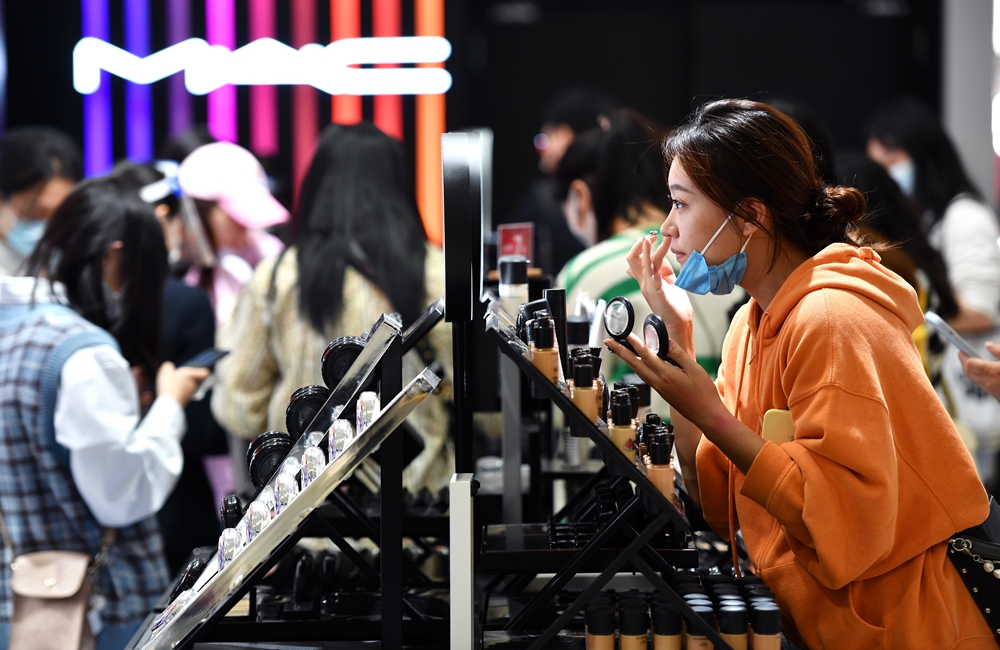China's cosmetics sales soar in overseas markets

Consumers are trying out cosmetics at a retail store. [Xinhua/Photo]
Sales of domestic cosmetics on the rise
According to a cosmetic retail store in Shenzhen city, south China's Guangdong province, many of its customers are young people, and the proportion of young consumers purchasing domestic cosmetics keeps going up. They say domestic cosmetics are now much more cost-effective than they were.
As offline sales increased, online sales also saw a strong recovery. The head of a domestic cosmetic company focusing on online sales stated that their products with anti-aging functions saw a higher repurchase rate this year, compared to that last year.
The continuous rise in sales of domestic cosmetics benefits from the progress of independent research and development. In the first half of this year, six domestic cosmetic brands unveiled exclusive "China-made ingredients." Emphasizing research and development has become an emerging trend in China's cosmetic industry.
Guo Wei, who has been working on cosmetic research and development for many years, explained that using self-developed ingredients can solve problems like the high cost of raw material procurement, the lack of pricing transparency, and over-reliance on importing raw materials from other countries.
According to data from the National Medical Products Administration, more than 60 new cosmetic ingredients have gotten registered, with the majority being anti-aging components.
Domestic cosmetics exports surge
Domestic cosmetics are becoming more popular not only in China but also overseas. Products such as Love Lock Lipstick have brought Chinese makeup and aesthetics to the world.
Zeng Ling, marketing manager of a Shenzhen-based cosmetic company, is busy preparing samples for shipment with her colleagues. Zeng said that there has been a notable increase in demand for domestic beauty products from foreign consumers. "Our first batch of products sent to the African market has already sold out, and now we urgently need to replenish with new products," Zeng Ling said with happiness.
The head of a cross-border e-commerce platform mentioned that the beauty and cosmetics industry is among the top ten industries in terms of purchasing volume on international platforms. This year, overseas demand for cosmetics has increased by 20% compared to the previous year, with North America and Europe being the core markets and the Middle East and Southeast Asia showing rapid growth.
A recent report on the cosmetics market in the ASEAN region under the RCEP (Regional Comprehensive Economic Partnership) revealed that China's total exports of cosmetics to other RCEP member countries rose from $980 million in 2021 to $1.51 billion in 2022, marking a 53.8% year-on-year growth. The share of China's cosmetics exports to RCEP countries also increased from 20.2% to 26.4%.
Source: CCTV Finance; trans-editing by Guo Yao








